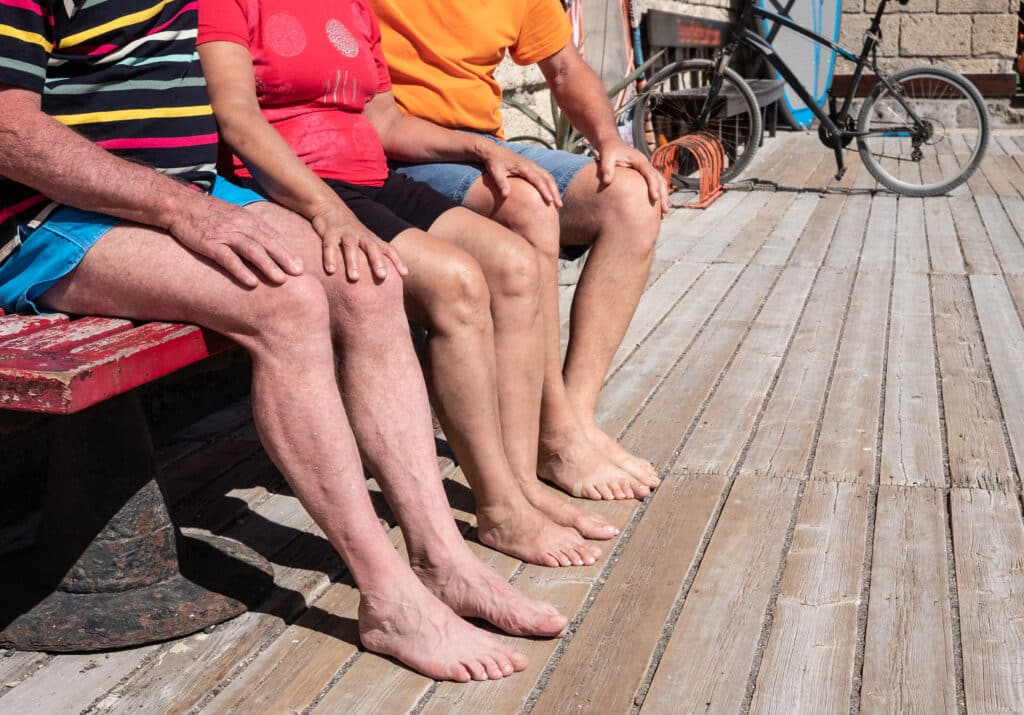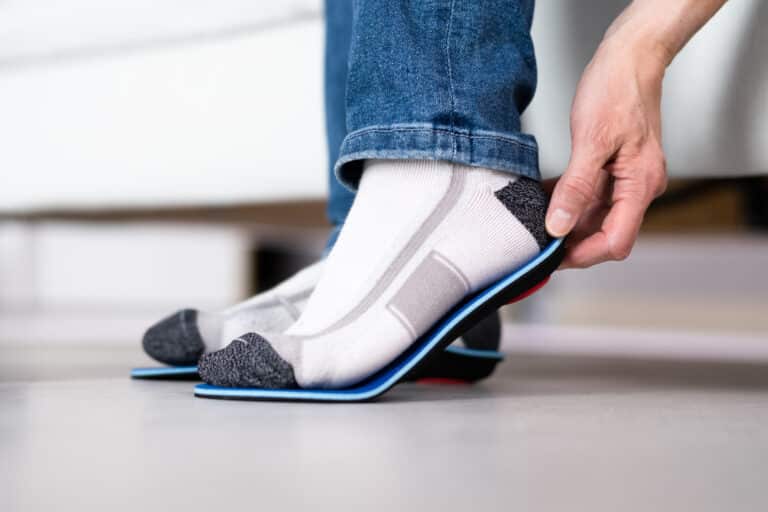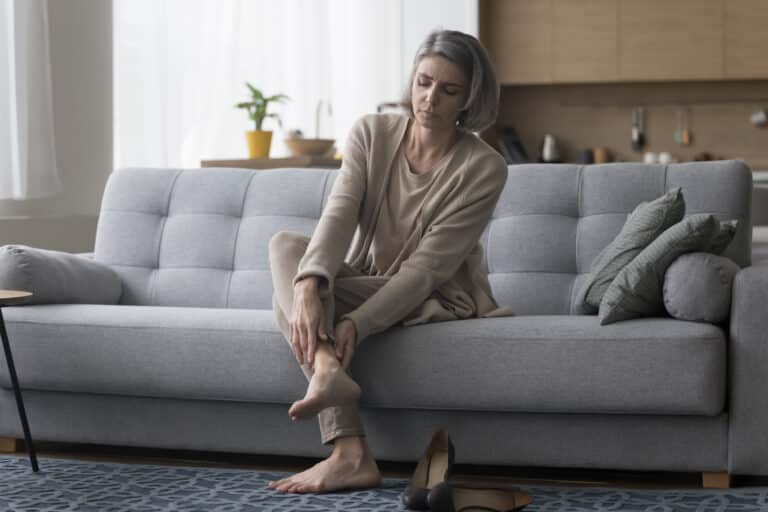Bunions occur when the alignment or size of bones in your foot changes. This causes the big toe to lean toward the smaller toes and a bump to form at the base of the big toe. Bunions can cause pain, swelling, restricted movement, and calluses.
Early identification and proper management are crucial to slowing or stopping their progression. Proper footwear with a wide toe box, flexible soles, and supportive arches can significantly alleviate symptoms.
Additionally, orthotics, toe spacers, and shoe padding can provide further relief and improve overall foot health. This article provides all the details that will help you choose the best shoes for bunions and make you feel great every day.
Let’s take a look at what bunions are and the best shoes for managing them.
The Basics of Bunions
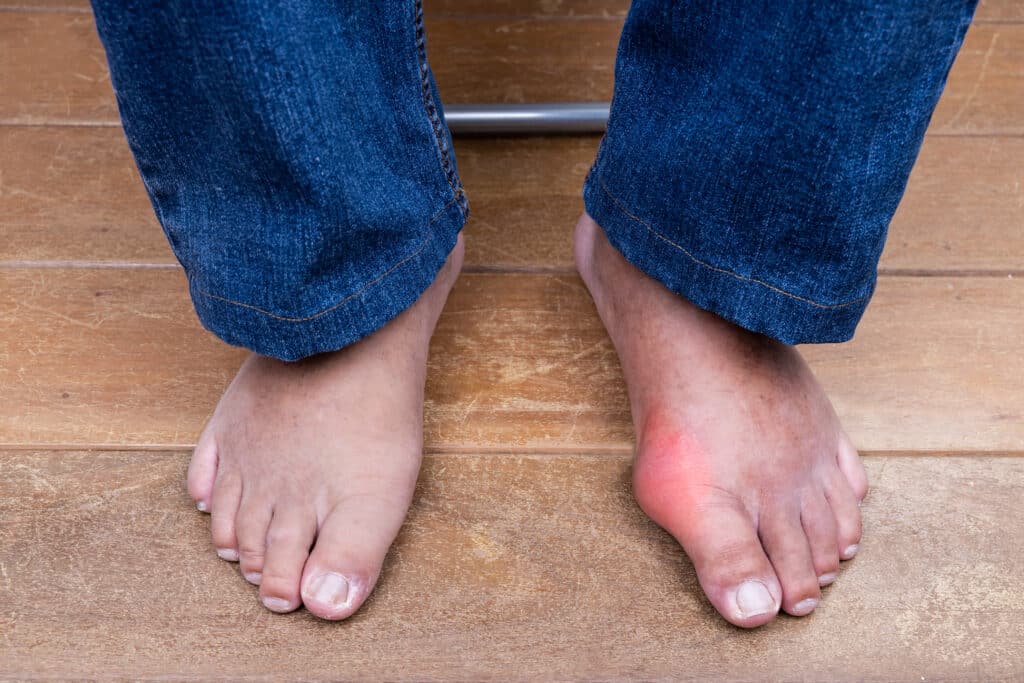
The journey toward bunion relief starts with understanding what bunions are.
Bunions, known as hallux valgus in the medical world, form when the alignment of your foot or the size of bones at your inner foot change. This causes your big toe to “lean” toward your smaller toes, which forces the joint at the base of your big toe to stick out.1
Bunions can cause symptoms ranging from mild and bothersome to more severe ones that limit mobility.
Here are some of the most common signs of bunions:
- Bony Bump: The primary indicator of a bunion is a visible bump or bulge on the outside of the base of your big toe.
- Swelling: Redness, soreness, and swelling may be present around your big toe joint.
- Pain around your big toe joint that comes and goes or is ongoing and persistent is common with bunions.
- Calluses: Your big toe pushing against and overlapping with your second toe often leads to corns and calluses.
- Restricted Movement: Moving your big toe normally may become difficult, making walking and doing other activities harder without pain and restriction.
In my experience helping older adults navigate their bunions, I’ve seen that the best results come from identifying a bunion or potential bunion early enough to slow or stop its progression.
If you’re unsure whether you have a bunion, consult a professional such as your primary care doctor, podiatrist, or physical therapist.
Understanding the Impact of Proper Footwear
With bunions, every step can feel uncomfortable or even painful, and even the most comfortable pair of shoes might feel like it is squeezing your feet. Wearing shoes that fit well can make a significant difference.
Avoiding shoes with narrow “toe boxes” plays a significant role in reducing bunion symptoms.
Narrow toe boxes—the area where your toes and forefoot sit in your shoe—crowd your toes together. Crowding of your big toe gets worse and puts even more pressure on the bunion, leaving you with more pain and discomfort.
Shoes with narrow toe boxes, high heels, or inadequate support restrict your feet. Regardless of style choices or function, they prevent you from moving comfortably, worsening your bunion symptoms.
Although there are many approaches to managing bunions, proper footwear usually has the most significant impact on older adults who want to relieve and slow the progression of their bunions. But what should you wear?
Choosing the Best Shoes for Bunions
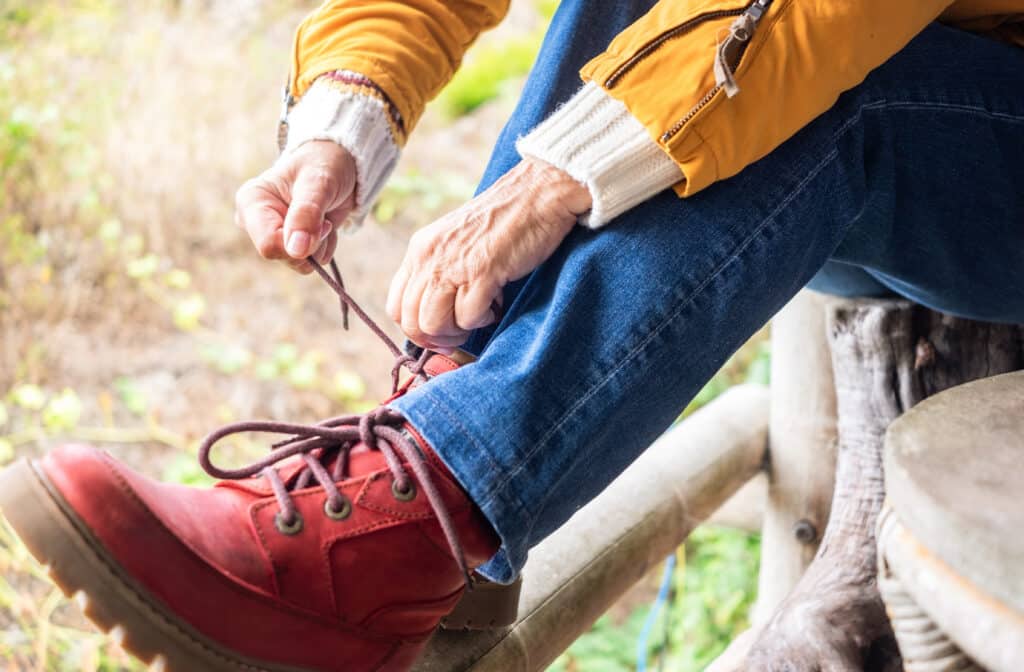
Finding the right shoes isn’t just a matter of comfort—it’s essential for effective bunion management. With the proper support, you can get more relief from discomfort and promote more independence.
So, what features should a bunion-friendly pair of shoes include? A blend of functionality and comfort is the goal, so here are a few key things to look out for as you make your selection:
Wide Toe Box
A wide toe box allows adequate room for your toes to spread out, reducing the amount of pressure on your bunion and improving pain or discomfort.
Flexible Soles
Shoes with flexible soles are huge for bunion relief. Giving room for your feet to move naturally as you walk minimizes the stress on your bunion and reduces pain.
Supportive Arches
Proper arch support helps distribute weight evenly through your feet, and limits stress on sensitive areas. This alleviates discomfort and can slow the progression of your bunion.
Although most of my patients want a specific recommendation for their footwear, I rarely provide specific shoe brands or models because what matters most is how the shoe feels on your foot.
For personalized guidance, I advise talking to a podiatrist or specialist who can assess your feet to provide the fit that you need.
Thinking Outside the Toe Box: Orthotics and Other Accessories
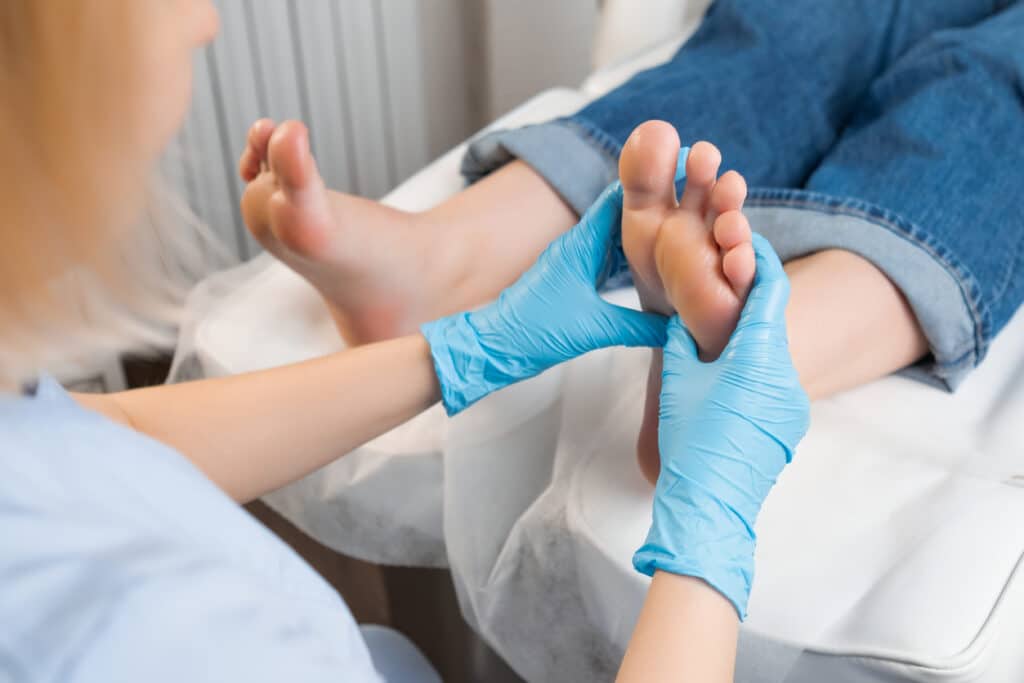
Managing bunions well can’t be done without the proper footwear. Still, there are extra steps you can take to alleviate your symptoms further, help prevent your condition from worsening, and improve your overall foot health.2
Orthotics
It’s common to think of orthotics as something you place in your shoe, but they’re much more than that. For many older adults, orthotics are vital for fighting bunion pain.
You can purchase orthotics over the counter, and some can be quite effective for managing bunions. However, like shoes, you’ll want to try them out and see what feels best for your feet.
Although more expensive, you can also consider custom-fitted orthotics from your podiatrist, physical therapist, or various online services that send you a mail-in mold for your foot.
This unusual option is worth considering if you’re already working with a provider specializing in bunion care and can optimize your orthotics accordingly.
Toe Spacers
There are a variety of toe spacers and separators available on the market. Some types resemble the small foam cutouts you put between your toes when you get a pedicure.
In contrast, others can be more similar to small pillows that go between each toe, and some wrap around each toe individually. They’re often made from foam, felt, or silicone for maximum comfort.
When your toes have enough space to move comfortably and aren’t as pressed together, you can prevent blisters and reduce pain. Better toe alignment can improve your walking mechanics, too, which can help avoid ankle, knee, and even hip or lower back pain.
Shoe Padding
Bunion pads are a specific type of padding that creates a soft barrier between your bunion and shoe. These pads protect the bunion from directly rubbing on your shoe. They can offer immediate relief from irritation caused by pressure or friction during walking and other activities.
While the right orthotics, shoe padding, and toe spacers can help you manage your bunion pain effectively, combining them with supportive shoes that allow for adequate foot movement can create a much more comfortable environment for your feet.
Taking Steps Toward Relief
I always emphasize to my patients in search of bunion relief that the details matter. It’s not about simply picking up a shoe that’s advertised to work for you; it is about understanding how each aspect of the shoe can help you feel better and contribute to your overall foot health.
Cushioned soles that absorb impact, adequate arch support that distributes pressure evenly, and a wide toe box with enough room for your toes to move comfortably are all significant features to prioritize in your search.
Managing bunions effectively requires a holistic approach based on understanding your condition, recognizing how the proper footwear can make a difference, and reaching out for help from a professional when you need advice.
Key Takeaways
- Bunions, medically termed hallux valgus, form when the alignment or size of foot bones change, leading to a visible bump at the base of the big toe.
- Common symptoms of bunions include a bony bump, swelling, pain, calluses, and restricted movement.
- Early identification and professional consultation are crucial to slowing or stopping the progression of bunions.
- Proper footwear with a wide toe box, flexible soles, and supportive arches is essential for effective bunion management.
- Narrow-toe boxes, high heels, and inadequate shoe support can exacerbate bunion symptoms.
- Orthotics, both over-the-counter and custom-fitted, can provide significant relief from bunion pain.
- Toe spacers can prevent toes from crowding, reduce pain, and improve walking mechanics.
- Shoe padding protects the bunion from friction and pressure, offering immediate relief during activities.
- A holistic approach to managing bunions includes understanding the condition, selecting appropriate footwear, and using additional accessories like orthotics and toe spacers.
- Consulting professionals such as primary care doctors, podiatrists, or physical therapists is essential for personalized advice and treatment.
FAQs
What are bunions?
Bunions, medically known as hallux valgus, occur when the alignment or size of the bones in your foot changes. This causes the big toe to lean toward the smaller toes, forming a visible bump at the base of the big toe.
What are the common symptoms of bunions?
Common symptoms of bunions include a bony bump at the base of the big toe, swelling, redness, pain that can be intermittent or persistent, calluses, and restricted movement of the big toe.
How can proper footwear help manage bunions?
Proper footwear with a wide toe box, flexible soles, and supportive arches can significantly alleviate bunion symptoms by reducing pressure on the bunion, allowing room for the toes to spread out, and providing better support for the feet.
What types of shoes should be avoided if you have bunions?
Shoes with narrow toe boxes, high heels, and inadequate support should be avoided, as they can crowd the toes, worsen the pressure on the bunion, and exacerbate symptoms.
How can orthotics help with bunion pain?
Orthotics, either over-the-counter or custom-fitted, can provide significant relief from bunion pain by offering additional support, redistributing weight evenly across the feet, and reducing stress on the affected area.
What are toe spacers, and how do they help with bunions?
Toe spacers are devices placed between the toes to prevent crowding and improve toe alignment. They can reduce pain, prevent blisters, and improve walking mechanics, which helps alleviate the discomfort associated with bunions.
What is shoe padding, and how does it help with bunion discomfort?
Shoe padding, such as bunion pads, creates a soft barrier between the bunion and the shoe. This helps protect the bunion from friction and pressure, providing immediate relief from irritation during walking and other activities.
Why is early identification and professional consultation important for managing bunions?
Early identification and consultation with a healthcare professional, such as a primary care doctor, podiatrist, or physical therapist, are crucial for slowing or stopping the progression of bunions. Professional advice ensures you receive personalized treatment and effective management strategies tailored to your specific needs.
Resources
- InformedHealth.org [Internet]. Cologne, Germany: Institute for Quality and Efficiency in Health Care (IQWiG); 2006-. Overview: Bunions. [Updated 2022 Jan 31].
- Aebischer AS, Duff S. Bunions: A review of management. Aust J Gen Pract. 2020 Nov;49(11):720-723. doi: 10.31128/AJGP-07-20-5541. PMID: 33123707.

